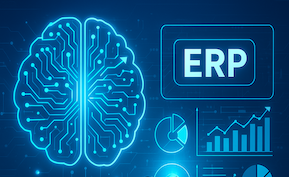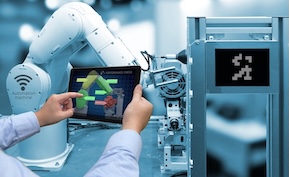Edge Computing in Smart Manufacturing: ERP at the Edge for Ultra-Low Latency Control
As smart factories evolve, the demand for real-time data processing and instant decision-making continues to grow. Traditional cloud-based systems often introduce latency that can limit responsiveness on the production floor. Edge computing brings computing power closer to where data is generated—on machines, sensors, and local networks—enabling ultra-fast analytics and control. When combined with manufacturing ERP systems, edge computing creates a new paradigm of distributed intelligence that enhances performance, reliability, and scalability.
What is edge computing in manufacturing
Edge computing refers to processing data near its source rather than sending it to a centralized cloud for analysis. In manufacturing environments, this means deploying microservers or embedded processors directly on production lines, robots, and IoT gateways. These edge nodes analyze data locally, execute control logic, and synchronize with the cloud or ERP system as needed. This distributed model ensures that time-sensitive operations continue without disruption, even if connectivity to the cloud is interrupted.
The limitations of cloud-only architectures
Cloud platforms provide scalability and centralized management but struggle with latency-sensitive tasks such as machine control, safety monitoring, and quality inspection. When milliseconds matter, even slight network delays can affect output quality and efficiency. Relying solely on the cloud also introduces risks around bandwidth constraints, data privacy, and reliability in environments with intermittent connectivity. Edge computing addresses these challenges by processing critical data locally and sending only aggregated results to the cloud.
How ERP and edge computing work together
Manufacturing ERP systems traditionally manage high-level planning, scheduling, and financial operations. By extending ERP intelligence to the edge, manufacturers can bridge the gap between strategic management and shop floor execution. Edge nodes feed real-time production data into the ERP, enabling instant updates to inventory, scheduling, and maintenance modules. Conversely, ERP systems can push configuration data, performance targets, or work orders directly to edge devices, ensuring continuous synchronization between business and operational systems.
Use cases for ERP at the edge
Edge-enabled ERP architectures support several high-impact manufacturing applications. In predictive maintenance, sensors at the edge monitor equipment performance and trigger local alerts before failures occur. In quality control, edge analytics detect defects instantly and adjust machine parameters automatically. In logistics and material handling, edge computing coordinates autonomous guided vehicles and robotic systems in real time. Each of these use cases reduces downtime, improves throughput, and increases operational precision.
Improving data security and compliance
Processing data locally enhances security and compliance by minimizing data transfer over public networks. Sensitive production information can be analyzed and acted upon within the factory, reducing exposure to external threats. Manufacturers operating under strict regulations—such as aerospace, defense, or pharmaceuticals—can use edge computing to maintain compliance with data sovereignty and audit requirements while still benefiting from cloud integration for broader analytics and reporting.
Reducing latency and increasing reliability
Edge computing minimizes latency by performing analytics and decision-making on-site, where milliseconds can make a difference. Localized control loops enable immediate responses to process variations, improving quality and safety. This capability is especially valuable in high-speed production environments, such as semiconductor fabrication or automotive assembly, where any delay can result in significant production loss. By decentralizing computing, manufacturers also reduce dependency on network stability and external data centers.
Integration and scalability considerations
Implementing edge computing requires careful integration with existing ERP, MES, and IoT infrastructures. Manufacturers should define which processes require local processing versus cloud coordination. Middleware and standardized communication protocols such as OPC UA, MQTT, and REST APIs enable smooth data flow across systems. Cloud-based ERP vendors are increasingly offering hybrid architectures that combine centralized planning with distributed edge intelligence, allowing companies to scale edge deployments without losing enterprise-wide visibility.
The role of AI at the edge
Artificial intelligence enhances the value of edge computing by enabling real-time learning and adaptation. Machine learning models deployed at the edge can identify patterns in sensor data, optimize machine parameters, and make decisions without waiting for cloud input. These models continuously improve as they collect more data, creating self-optimizing production systems. AI-driven edge architectures transform the manufacturing floor into a network of intelligent, autonomous units connected through the ERP system.
The future of distributed manufacturing intelligence
The convergence of ERP, IoT, and edge computing represents the next evolution of smart manufacturing. As network speeds increase and hardware costs decrease, manufacturers will move toward fully distributed architectures where intelligence exists at every level—from machine sensors to enterprise analytics. This distributed intelligence enables more resilient operations, faster innovation, and greater adaptability to changing customer demands and supply conditions.
The takeaway
Edge computing brings agility and precision to manufacturing operations by placing data processing where it matters most—on the factory floor. When integrated with ERP systems, it enables real-time synchronization between planning and execution, reduces latency, and enhances operational reliability. The future of smart manufacturing lies in this hybrid model, where cloud and edge work together to deliver the responsiveness, scalability, and intelligence needed for Industry 4.0 and beyond.







